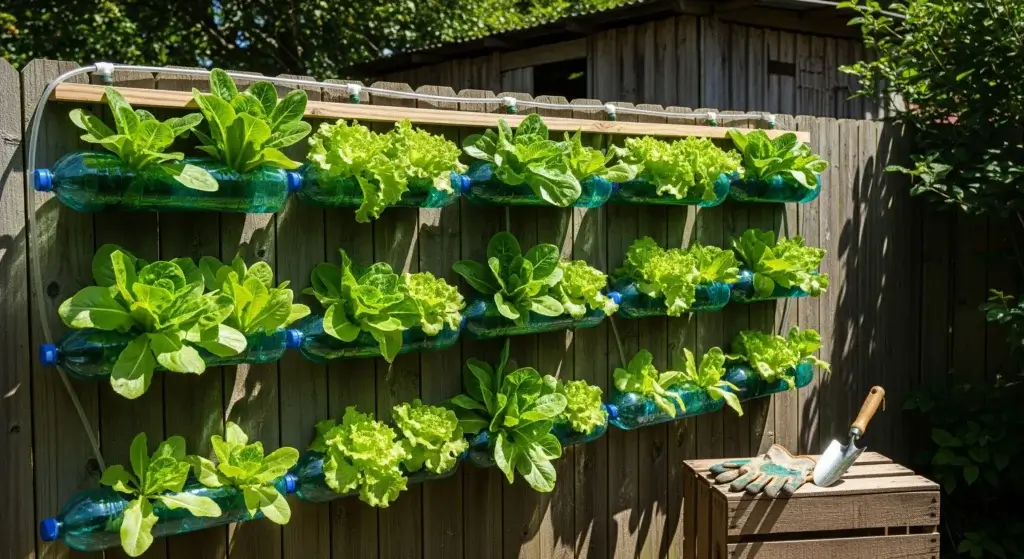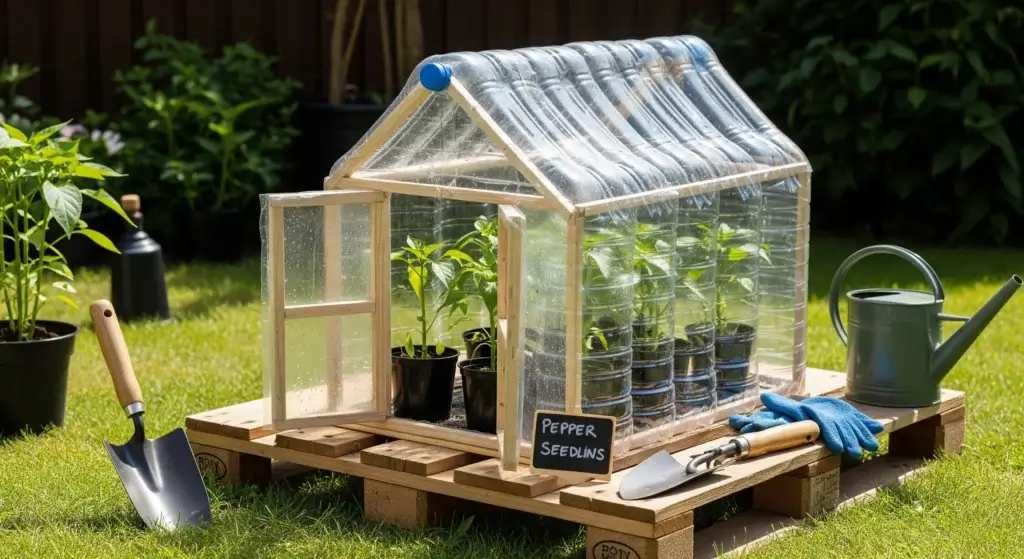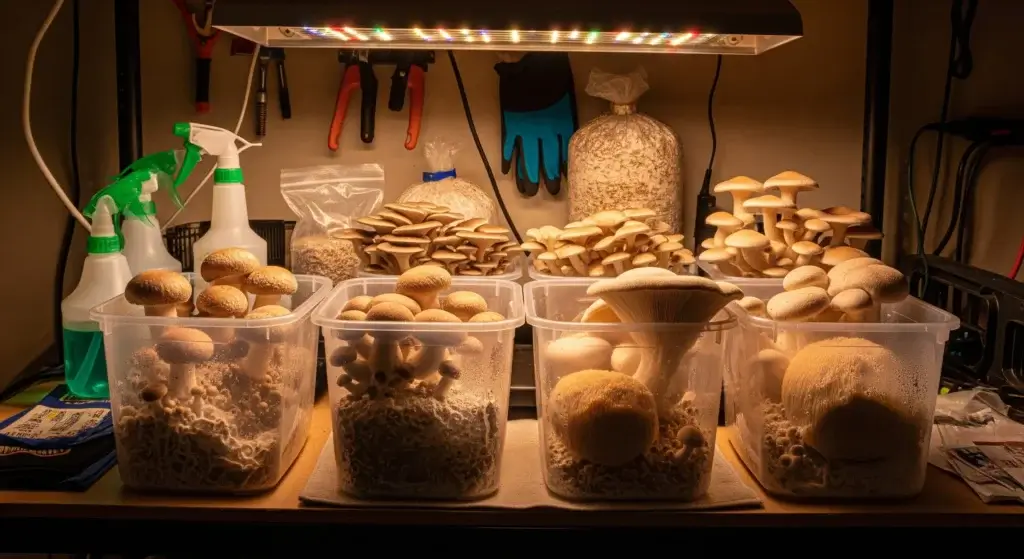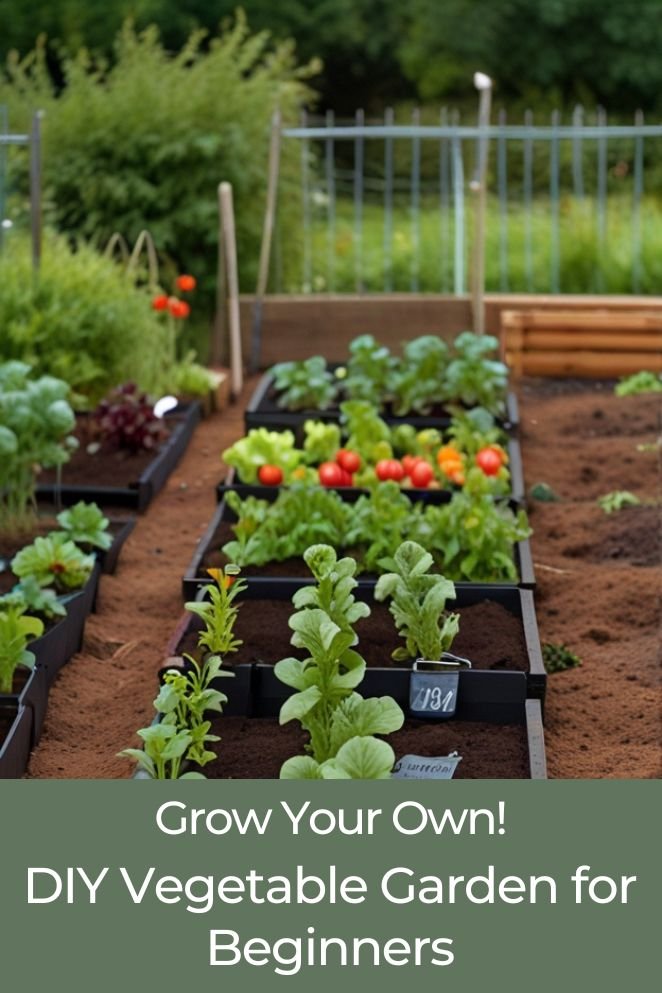
Embarking on a journey to cultivate your vegetable garden can prove incredibly fulfilling for newcomers.
Beyond the joy of nurturing your crops, it offers an opportunity to relish fresh produce, economize, and bolster your well-being.
In this article, we’ll walk you through the steps of strategizing, establishing, and maintaining your personal vegetable garden.
Planning Your Vegetable Garden
Planning your vegetable garden involves several key considerations to ensure a successful and bountiful harvest:
Location
It’s essential to choose a sunny spot with good drainage for your vegetable garden.
Most vegetables require at least 6-8 hours of sunlight per day to thrive.
Avoid areas that are shaded by trees or buildings, as insufficient sunlight can result in poor growth and yield.
Additionally, ensure that the soil drains well to prevent waterlogging, which can lead to root rot and other issues.
Size
Determine the size of your garden based on the amount of space you have available and the number of plants you plan to grow.
Consider factors such as the layout of your yard, available sunlight, and your gardening goals.
If you’re limited on space, you can still grow vegetables in containers or raised beds to maximize your growing area.
Start small if you’re a beginner and gradually expand as you gain experience and confidence.
Choosing what to plant
Select vegetables that are well-suited to your climate and the amount of sunlight your garden receives.
Consider factors such as temperature, humidity, and frost dates when choosing your plants.
Research which vegetables thrive in your region and plan your garden accordingly.
It’s also essential to consider the needs of each plant, such as spacing requirements and companion planting.
Choose a variety of vegetables to ensure a diverse and nutritious harvest throughout the growing season.
Soil preparation
Before planting, prepare the soil by loosening it with a garden fork or tiller and incorporating organic matter such as compost or aged manure.
This improves soil structure, fertility, and drainage, providing a healthy environment for plant roots to grow.
Test the soil pH and nutrient levels to determine if any amendments are needed to optimize plant growth.
Regularly mulch the soil to conserve moisture, suppress weeds, and regulate soil temperature.
Planting and care
Follow the recommended planting guidelines for each vegetable, including spacing, depth, and planting time.
Water your garden regularly, aiming to keep the soil consistently moist but not waterlogged.
Monitor for pests and diseases, and take appropriate measures to control them, such as handpicking insects or using organic pest control methods.
Provide support for vining plants such as tomatoes and cucumbers, and regularly harvest ripe vegetables to encourage continuous production.

Setting Up Your Vegetable Garden
Setting up your vegetable garden can be done in various ways, depending on your available space and preferences.
Here are two common methods:
In-ground garden
In-ground gardening involves planting directly into the soil of your yard or garden bed.
Here’s how to set it up:
Prepare the soil
Start by clearing the area of any weeds or debris.
This ensures that your plants have room to grow without competition from unwanted vegetation.
Next, enrich the soil by adding compost or aged manure.
This helps improve soil structure, fertility, and drainage, providing a healthy environment for your plants to thrive.
Use a garden fork or tiller to incorporate the compost into the soil, breaking up any clumps and ensuring an even distribution of nutrients.
Tilling
Tilling is the process of breaking up and loosening the soil to create a suitable planting bed.
Use a garden tiller or hand tools like a garden fork or hoe to till the soil to a depth of about 8-12 inches.
This helps aerate the soil, improve drainage, and create a loose, friable texture that’s ideal for root growth.
Planting
Once the soil is prepared, it’s time to plant your vegetables.
Follow the spacing and planting depth recommendations for each type of vegetable, and water thoroughly after planting to help settle the soil around the roots.
Container gardening
Container gardening is a versatile option for those with limited space or poor soil conditions.
Here’s how to set up a container garden:
Choose the right container
Select containers that are large enough to accommodate the root systems of your chosen vegetables.
Ensure that the containers have drainage holes to prevent waterlogging, which can lead to root rot.
Containers can be made of various materials, such as plastic, ceramic, or wood.
Consider the aesthetic appeal, durability, and weight of the containers when making your selection.
Fill with suitable potting mix
Use a high-quality potting mix specifically formulated for container gardening.
Avoid using garden soil, as it may not provide adequate drainage and may contain weed seeds and pathogens.
Fill the containers with potting mix, leaving a few inches of space at the top to allow for watering and plant growth.
Add drainage
Before planting, ensure that the containers have proper drainage by placing a layer of gravel or small stones at the bottom.
This helps prevent water from pooling at the bottom of the container and ensures adequate oxygenation of the roots.
Planting
Once the containers are prepared, plant your vegetables according to the spacing and planting depth recommendations for each type of plant.
Water thoroughly after planting to settle the soil and provide moisture to the roots.
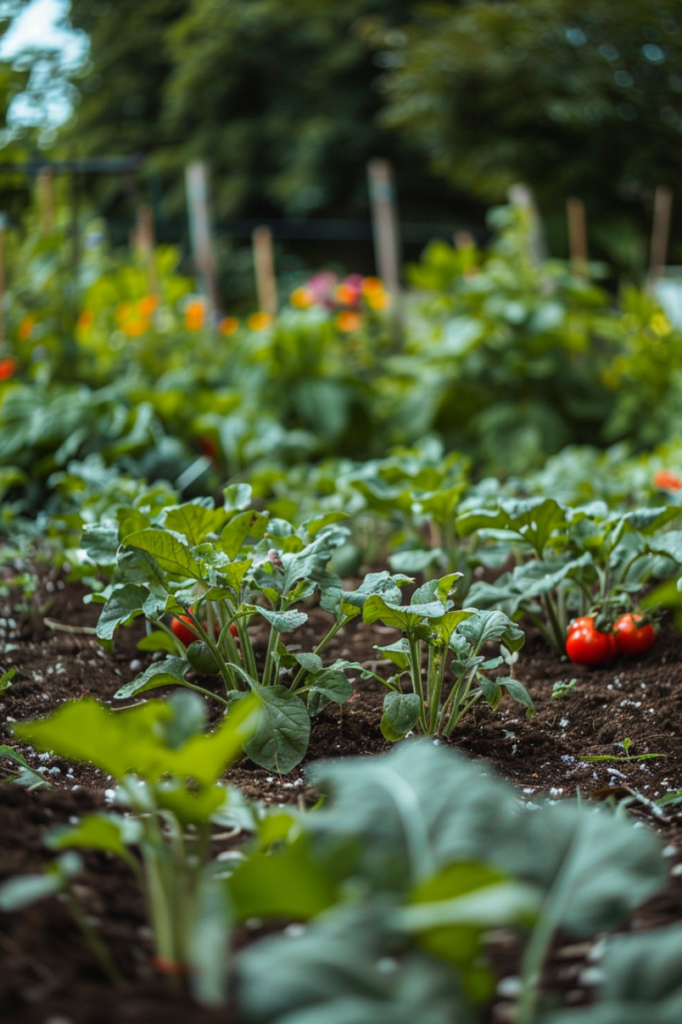
Planting Your Vegetables
When planting your vegetables, there are a few key decisions to make to ensure a successful growing season:
Seeds vs. seedlings
Before you begin planting, you’ll need to decide whether to start your vegetables from seeds or purchase seedlings from a nursery or garden center.
Starting from seeds allows you to choose from a wider variety of vegetable varieties and can be more cost-effective.
However, it requires more time and attention to nurture the seeds into healthy seedlings before transplanting them into the garden.
On the other hand, purchasing seedlings provides a head start, as they are already established and ready to be planted directly into the garden.
Spacing
Proper spacing is essential for the healthy growth of your vegetables.
Each type of vegetable has specific spacing requirements based on factors such as their mature size and root structure.
It’s important to follow the recommended spacing guidelines to ensure that your plants have enough room to develop fully and avoid competing for resources such as sunlight, water, and nutrients.
Planting too closely together can lead to overcrowding, poor air circulation, and increased risk of disease.
Conversely, planting too far apart can waste valuable growing space and reduce overall yield.
Taking Care of Your Vegetable Garden
Taking care of your vegetable garden requires attention to several key tasks to ensure healthy plant growth and a bountiful harvest:
Watering
Proper watering is essential for the health and productivity of your vegetable garden, especially during dry spells or hot weather.
Aim to keep the soil consistently moist but not waterlogged, as excessive moisture can lead to root rot and other issues.
Water your garden deeply and evenly, ensuring that the water reaches the root zone of your plants.
Consider using a soaker hose or drip irrigation system to deliver water directly to the base of your plants, minimizing water waste and reducing the risk of disease.
Weeding
Weeds compete with your vegetables for essential resources such as sunlight, water, and nutrients, so it’s important to keep them in check.
Regularly inspect your garden for weeds and remove them promptly to prevent them from overtaking your vegetable plants.
Use a garden hoe, hand cultivator, or your hands to pull weeds from the soil, being careful to remove the entire root system to prevent regrowth.
Pests and diseases
Monitor your garden regularly for signs of pests and diseases, as early detection is key to effective control.
Look for chewed leaves, holes in foliage, discolored spots, or unusual growth patterns that may indicate the presence of pests or diseases.
Common garden pests include aphids, caterpillars, slugs, and snails, while diseases such as powdery mildew, blight, and rot can also affect vegetable plants.
Take appropriate action to control pests and diseases, such as handpicking insects, applying organic insecticides or fungicides, or using cultural practices like crop rotation and companion planting to minimize damage and prevent outbreaks.
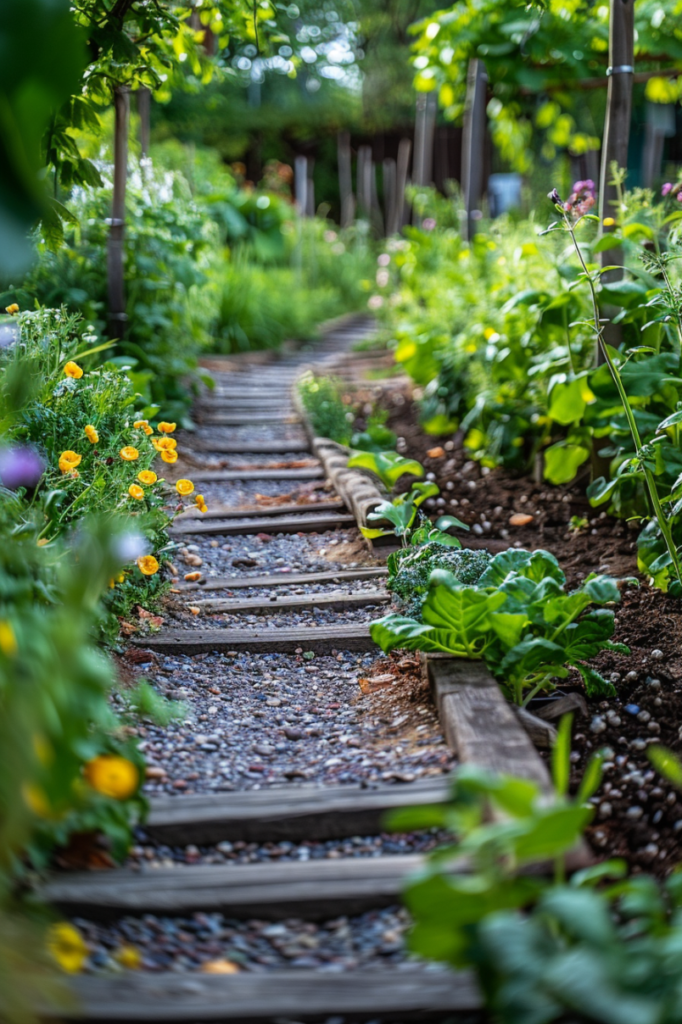
Harvesting Your Vegetable Garden
Harvesting your vegetables from the garden is a rewarding culmination of your hard work and care.
Here’s how to ensure a successful harvest and proper storage:
Harvesting
Timing is crucial when it comes to harvesting vegetables. Pick your vegetables when they are fully ripe and ready to eat for the best flavor and nutritional value.
Different vegetables have different indicators of ripeness, such as color, size, and texture.
For example, tomatoes should be firm and fully colored, while lettuce should be crisp and vibrant.
Use a sharp knife, scissors, or your hands to gently remove vegetables from the plant, taking care not to damage the plant or neighboring fruits.
Harvest regularly to encourage continuous production and prevent overripening or spoilage.
Storing
Proper storage is essential to maximize the shelf life of your harvested vegetables and prevent them from spoiling prematurely.
Follow these tips for storing your vegetables:
Clean your vegetables
Before storing, gently wash your vegetables to remove any dirt or debris.
Dry them thoroughly with a clean towel or paper towel to prevent excess moisture, which can promote rotting.
Choose the right storage containers
Use breathable containers such as perforated plastic bags, mesh bags, or vegetable storage bins to allow air circulation and prevent moisture buildup.
Avoid sealing vegetables in airtight containers, as this can lead to rotting.
Store in a cool, dark place
Most vegetables prefer cool, dark environments for storage to slow down the ripening process and prolong freshness.
Ideal storage locations include a root cellar, basement, or refrigerator crisper drawer.
Keep vegetables away from direct sunlight and sources of heat, which can cause them to spoil more quickly.
Monitor for spoilage
Regularly check your stored vegetables for signs of spoilage, such as mold, soft spots, or off odors.
Remove any spoiled vegetables immediately to prevent them from contaminating the rest of the batch.
Use proper storage techniques
Some vegetables require specific storage techniques to maintain freshness.
For example, root vegetables like carrots and potatoes should be stored in a cool, dark place with high humidity, while leafy greens like lettuce and spinach benefit from being stored in a plastic bag with a damp paper towel to retain moisture.

Conclusion
Starting a vegetable garden can be a fun and rewarding experience for beginners.
By following these steps, you’ll be on your way to growing your own fresh produce and enjoying the benefits of a homegrown garden.

